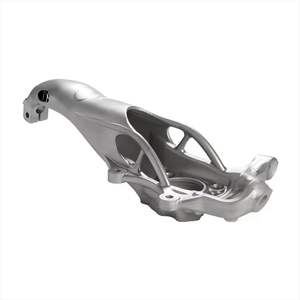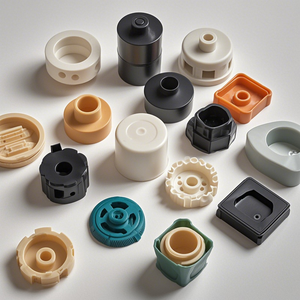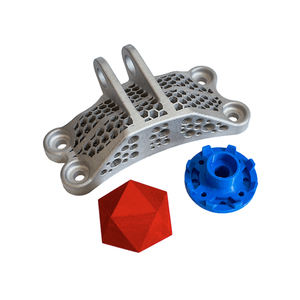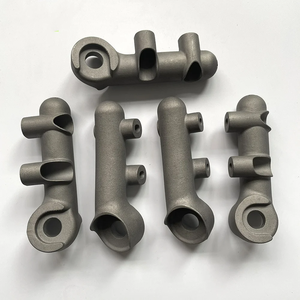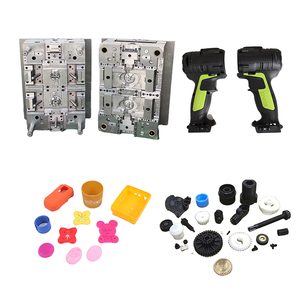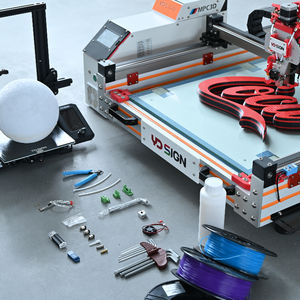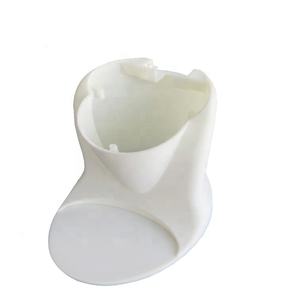Discover a professional 3D printing powder supplier
PRODUCT PARAMETERS
Description
Overview of High Precision 3D Printing Services Auto Parts Rapid Prototype CNC Machining
3D printing, also known as additive manufacturing, is a transformative technology that allows the creation of three-dimensional objects by depositing materials layer by layer based on digital designs. This process opens up a new world of possibilities in product design, customization, and production, revolutionizing various industries including healthcare, aerospace, automotive, consumer goods, and more.
Customization & Personalization: One of the key advantages of 3D printing is its ability to create highly customized products tailored to individual needs or preferences, from prosthetics to fashion accessories.
Complex Geometry: 3D printing excels at producing intricate shapes and geometries that would be extremely challenging or impossible to manufacture using conventional methods, such as internal lattice structures or organic forms.
Rapid Prototyping: It significantly speeds up the product development cycle by enabling designers and engineers to quickly produce physical prototypes for testing and refinement.
On-Demand Manufacturing: The technology supports small-batch or even one-off production runs economically, reducing the need for large inventories and allowing for just-in-time manufacturing.
Material Diversity: A wide range of materials can be used in 3D printing, including plastics, metals, ceramics, composites, and even biomaterials, each offering unique properties for specific applications.
Reduced Waste: As compared to subtractive manufacturing techniques, 3D printing only adds material where needed, leading to less waste and a more sustainable manufacturing process.
Features of High Precision 3D Printing Services Auto Parts Rapid Prototype CNC Machining
Design Flexibility: The technology enables the realization of complex designs without the constraints of traditional manufacturing tools and molds.
Functional Integration: Parts can be designed with integrated features such as channels, cavities, or interlocking components, which can enhance functionality or simplify assembly.
Lightweight Structures: Advanced 3D printing techniques allow for the creation of lightweight yet strong structures through optimized designs and the use of lattice structures or composite materials.
Improved Performance: By precisely controlling material composition and structure, 3D printed parts can exhibit enhanced mechanical, thermal, or electrical properties.
Cost-Efficiency for Complexity: While 3D printing may not always compete with mass-production methods for simple parts, it becomes increasingly cost-effective as the complexity of the part increases.
Innovative Applications: From medical implants that match a patient’s anatomy perfectly to aerospace components that reduce weight and increase efficiency, 3D printing pushes the boundaries of what’s possible in product design and engineering.

(High Precision 3D Printing Services Auto Parts Rapid Prototype CNC Machining)
Specification of High Precision 3D Printing Services Auto Parts Rapid Prototype CNC Machining
High Precision 3D Printing Solutions Automobile Parts Rapid Model CNC Machining supplies sophisticated manufacturing solutions for industries needing accuracy and speed. The solution sustains numerous 3D printing innovations like SLA, SLS, and DMLS. These approaches produce intricate geometries with limited resistances approximately ± 0.05 mm. Materials include engineering-grade plastics, steels like light weight aluminum and stainless steel, and compounds. Components produced are durable and suitable for useful screening or end-use applications.
CNC machining complements 3D printing for tasks requiring subtractive production. Accuracy CNC mills and lathes deal with metals, plastics, and ceramics. Machined parts attain tolerances as reduced as ± 0.01 mm. This makes sure high repeatability for automation or custom-made models. Surface coatings vary from raw machined appearances to polished or plated coatings. Quality assurance includes coordinate gauging devices (CMM) and manual examinations. Every part fulfills stringent market standards prior to delivery.
Rapid prototyping reduces growth cycles. Designers can evaluate several models swiftly. 3D printing generates models in days rather than weeks. CNC machining uses same-day turnaround for easier styles. Both approaches lower prices by minimizing material waste and tooling expenses. Automotive, aerospace, clinical, and customer electronics markets gain from these solutions. Personalized automotive parts like braces, housings, or engine components prevail jobs. Practical models verify fit, type, and efficiency before major manufacturing.
The solution sustains small-batch manufacturing for low-volume demands. No minimum order amount applies. Customers submit CAD documents or demand layout aid. Engineers evaluate styles for manufacturability and suggest optimizations. On-line quoting offers instantaneous pricing based upon product, quantity, and preparation. Standard lead times begin at 1– 3 business days. Expedited choices are available for urgent tasks.
Global shipping makes sure parts get to clients worldwide. Safe and secure product packaging protects components throughout transit. Dedicated customer care helps with technological inquiries or order monitoring. The mix of 3D printing and CNC machining covers a broad range of production requirements. Businesses decrease time-to-market while maintaining top quality.

(High Precision 3D Printing Services Auto Parts Rapid Prototype CNC Machining)
Applications of High Precision 3D Printing Services Auto Parts Rapid Prototype CNC Machining
High precision 3D printing services reinvent exactly how vehicle parts are designed and generated. This technology produces complex forms promptly. Designers utilize it to make prototypes that match specific specs. Standard methods take much longer. 3D printing reduces waste. It permits testing designs before automation. Vehicle manufacturers save time and money.
Quick prototyping is essential for developing new automobile versions. Business test components under real-world conditions early. Style problems get repaired much faster. Adjustments happen in hours, not weeks. This accelerate the entire manufacturing cycle. Customized components for specific niche markets come to be less complicated to create. Low-volume batches are cost-efficient.
CNC machining works with metals and plastics. It uses limited tolerances for vital components. Engine parts, gears, and brackets take advantage of this precision. CNC equipments handle sturdy products like titanium or light weight aluminum. Durability matters for efficiency and safety and security. Automated procedures make sure consistency across large orders.
Integrating 3D printing and CNC machining improves flexibility. Complex prototypes make use of 3D printing. Last components requiring stamina usage CNC. Hybrid process lower hold-ups. Suppliers adjust to transforming needs without reducing. Custom-made tools and fixtures are made on-site. This cuts dependence on outside vendors.
Vehicle sectors depend on these technologies for technology. Electric lorries require lightweight parts. 3D printing creates optimized frameworks that lower weight. CNC machining ensures battery parts fit perfectly. Rapid prototyping examinations the rules of aerodynamics for efficiency.
Local business access advanced production tools via company. They prevent high ahead of time expenses. Manufacturing scales as needed. Worldwide supply chains deal with fewer interruptions. Local manufacturing ends up being possible.
High precision methods fulfill strict sector requirements. Products hold up against extreme temperature levels and tension. Repeatability makes certain every component matches the layout. Quality control is integrated at every step. Problems get captured early.
These solutions support sustainability. Product waste goes down significantly. Energy use is reduced contrasted to standard manufacturing facilities. Recycling programs for steel powders and plastics increase. Environment-friendly practices align with modern laws.
Company Profile
3D Printing Passion is a trusted global chemical material supplier & manufacturer with over 12-year-experience in providing super high-quality 3D printing powder and relative products.
The company has a professional technical department and Quality Supervision Department, a well-equipped laboratory, and equipped with advanced testing equipment and after-sales customer service center.
If you are looking for high-quality 3D printing materials and relative products, please feel free to contact us or click on the needed products to send an inquiry.
Payment Methods
L/C, T/T, Western Union, Paypal, Credit Card etc.
Shipment
It could be shipped by sea, by air, or by reveal ASAP as soon as repayment receipt.
5 FAQs of High Precision 3D Printing Services Auto Parts Rapid Prototype CNC Machining
High precision 3D printing services create detailed parts using advanced machines. Layers of material build the part based on a digital design. This method works for complex shapes traditional manufacturing can’t handle. It’s fast and accurate for prototypes or small batches.
3D printing and CNC machining differ in how they make parts. 3D printing adds material layer by layer. CNC machining cuts material from a solid block. 3D printing suits complex designs. CNC machining works better for strong, precise parts from metals or tough plastics.
Common materials include ABS, nylon, resin, and metal powders. ABS and nylon are tough for functional parts. Resin gives smooth surfaces for detailed models. Metal powders like aluminum or steel are for industrial-grade parts. The choice depends on strength, heat resistance, or finish needs.
Lead times vary based on part size and method. 3D printing takes hours to a few days. CNC machining might take longer for complex designs. Rush options exist for urgent projects. Sharing design files early helps speed things up.
Quality checks include measuring parts with tools like calipers or 3D scanners. Tests check strength, heat resistance, or fit. Prototypes are tested in real-world conditions. Feedback ensures final parts meet requirements. Every step focuses on accuracy and performance.
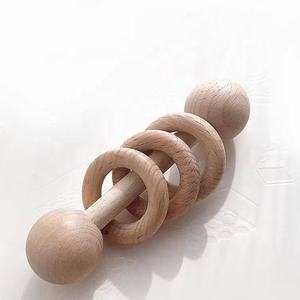
(High Precision 3D Printing Services Auto Parts Rapid Prototype CNC Machining)

